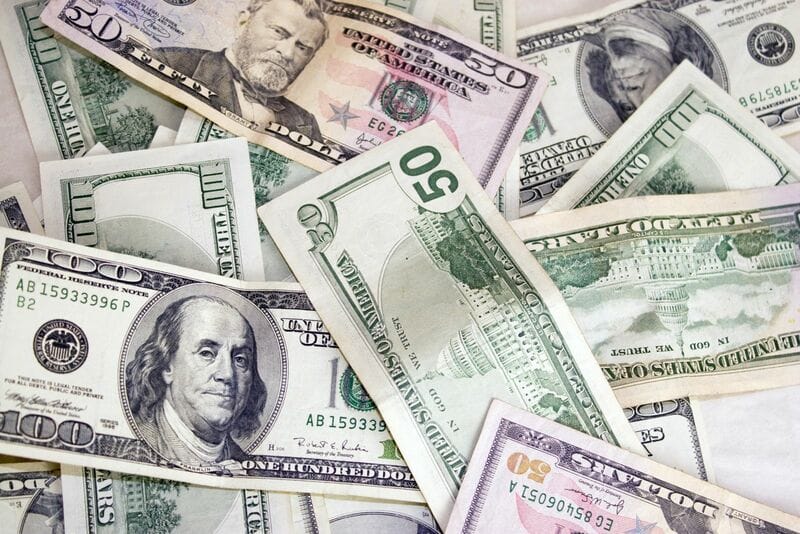
The dollar index (DXY00) on Tuesday rose to a 1-week high and finished up by +0.60%. The dollar rallied Tuesday after T-note yields jumped when the US Q1 employment cost index rose more than expected, a sign of wage pressures and a hawkish factor for Fed policy. Falling stock prices Tuesday also boosted liquidity demand for the dollar. The dollar is also supported by expectations that the FOMC on Wednesday will signal the Fed will delay interest rate cuts after its 2-day meeting.
The US Q1 employment cost index rose +1.2% q/q, stronger than expectations of +1.0% q/q.
The US Feb S&P CoreLogic composite-20 home price index rose +6.38% y/y, right on expectations and the largest increase in 15 months.
The US Apr MNI Chicago PMI unexpectedly fell -3.5 to 37.9, weaker than expectations of an increase to 45.0 and the steepest pace of contraction in 17 months.
The Conference Board US Apr consumer confidence index fell -6.1 to a 1-3/4 year low of 97.0, weaker than expectations of 104.0.
The markets are discounting the chances for a -25 bp rate cut at 1% for the next FOMC meeting on April 30-May 1 and 10% for the following meeting on June 11-12.
EUR/USD (^EURUSD) on Tuesday fell by -0.418%. The euro was under pressure Tuesday from a stronger dollar. Also, Tuesday’s Eurozone CPI report showed Apr core CPI easing to a 2-year low of +2.7% y/y, a dovish factor for ECB policy. Losses in the euro accelerated Tuesday after ECB Governing Council member Villeroy de Galhau said Eurozone inflation data for April give the ECB confidence to begin cutting interest rates in June.
Eurozone Q1 GDP rose +0.3% q/q and +0.4% y/y, stronger than expectations of +0.1% q/q and +0.2% y/y.
Eurozone Apr CPI was unchanged from Mar at +2.4% y/y, right on expectations. The Apr core CPI eased to a 2-year low of +2.7% y/y from +2.9% y/y in Mar.
German Mar retail sales rose +1.8% m/m, stronger than expectations of +1.4% m/m and the largest increase in 2-1/4 years.
ECB Governing Council member Villeroy de Galhau said Eurozone inflation data for April give the ECB confidence to begin cutting interest rates in June before continuing to loosen monetary policy at a pragmatic pace.
Swaps are discounting the chances of a -25 bp rate cut by the ECB at 87% for its next meeting on June 6.
USD/JPY (^USDJPY) on Tuesday rose by +0.88%. The yen was under pressure Tuesday from rising T-note yields. Also, Tuesday’s news that showed Japan Mar retail sales fell more than expected is bearish for the yen. On the positive side for the yen was Tuesday’s news that showed Japan's Mar industrial production rose more than expected by the most in 1-3/4 years.
Japan Mar retail sales fell -1.2% m/m, weaker than expectations of -0.2% m/m.
Japan's Mar industrial production rose +3.8% m/m, stronger than expectations of +3.3% m/m and the largest increase in 1-3/4 years.
A Bloomberg analysis of BOJ accounts suggests the BOJ intervened in the forex market Monday for around 5.5 trillion yen ($35 billion) to support the yen.
Swaps are pricing in the chances for a +10 bp rate increase by the BOJ at 10% for the June 14 meeting.
June gold (GCM4) on Tuesday closed down -54.8 (-2.32%), and May silver (SIK24) closed down -0.982 (-3.59%). Precious metals Tuesday sold off sharply, with gold and silver falling to 3-week lows. Tuesday's stronger dollar and higher global bond yields weighed precious metals prices. Also, Tuesday’s stronger-than-expected US Q1 employment cost index may keep the Fed from cutting interest rates and was negative for precious metals. Fund liquidation also weighed down gold prices after long gold holdings in ETFs fell to a 4-1/2 year low on Monday. Finally, expectations that the FOMC on Wednesday will signal it will delay interest rate cuts are bearish for precious metals.
On the date of publication, Rich Asplund did not have (either directly or indirectly) positions in any of the securities mentioned in this article. All information and data in this article is solely for informational purposes. For more information please view the Barchart Disclosure Policy here.







